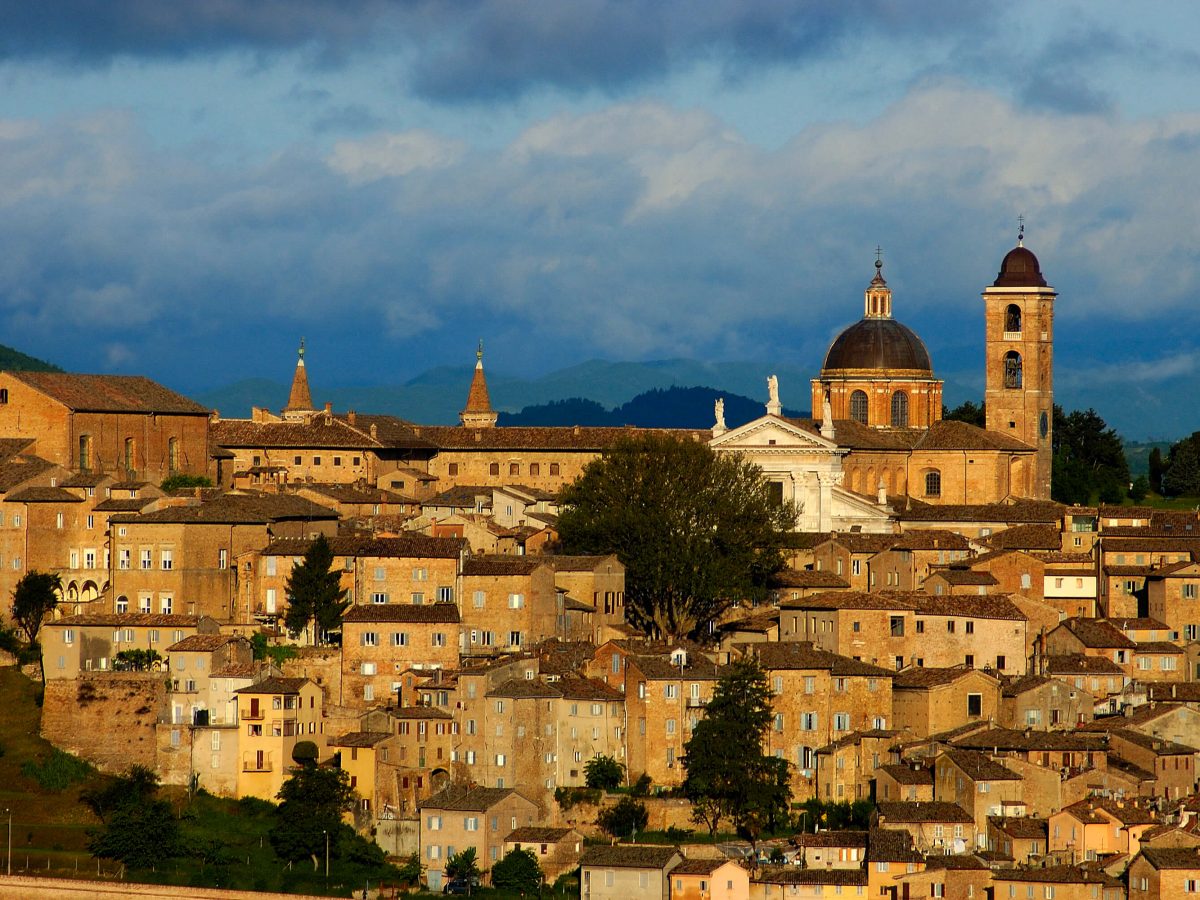The UNESCO Site, “Historic Centre of Urbino” coincides with the area bordered by renaissance walls that survive virtually intact with their bastions. It Includes, inside the historic centre, several buildings of extraordinary quality such as the Ducal Palace, the Cathedral, the Monastery of Santa Chiara and also a complex system of oratories. The initial nucleus of the city is comprised of a Roman settlement on the top of the hill where the Ducal Palace now stands. Up to the 11th century, the city remained within these limits, but it began to expand at the end of that century, requiring the construction of a new system of defensive walls. In the mid 15th century Federico da Montefeltro undertook a radical rebuilding campaign in the city, though without disturbing its overall urban structure. The city was later expanded to a second hill lying to the north, giving the area now enclosed by the renaissance walls an elongated outline.
Urbino is a small city in the hills that experienced an astonishing cultural flowering in the 15th century, attracting to it artists and scholars from all over Italy and beyond, and influencing cultural developments elsewhere in Europe. Some of the leading humanists of the time, such as Leone Battista Alberti, Marsilio Ficino, and Giovanni Bessarione; mathematicians like Paul van Middelburg and artists such as Luciano Laurana, Francesco di Giorgio Martini, Paolo Uccello, Piero della Francesca and Ambrogio Barocci came together at the court of the Montefeltro Duke Federico III, who ruled in Urbino from 1444 to 1482, to create and implement outstanding cultural and urban projects. It is in this cultural climate that Raphael, Donato Bramante and mathematician Luca Pacioli grew.
Urbino has preserved its authenticity, by using traditional and historical techniques and building materials in the maintenance and restoration work on buildings and in the public areas of the historic centre, preserving the formal characteristics, types and dimensions of existing architecture. It has thus preserved its spatial characteristics, volumes and decorative features, which date back to the older mediaeval layout, with its narrow streets, as well as to the subsequent renaissance additions. Even the interventions dating back to the 18th and 19th centuries left the renaissance layout almost completely untouched. Each intervention performed did not alter the original equilibrium between the landscape and the urban structures, preserving the integrity of the environmental and the city heritage.


